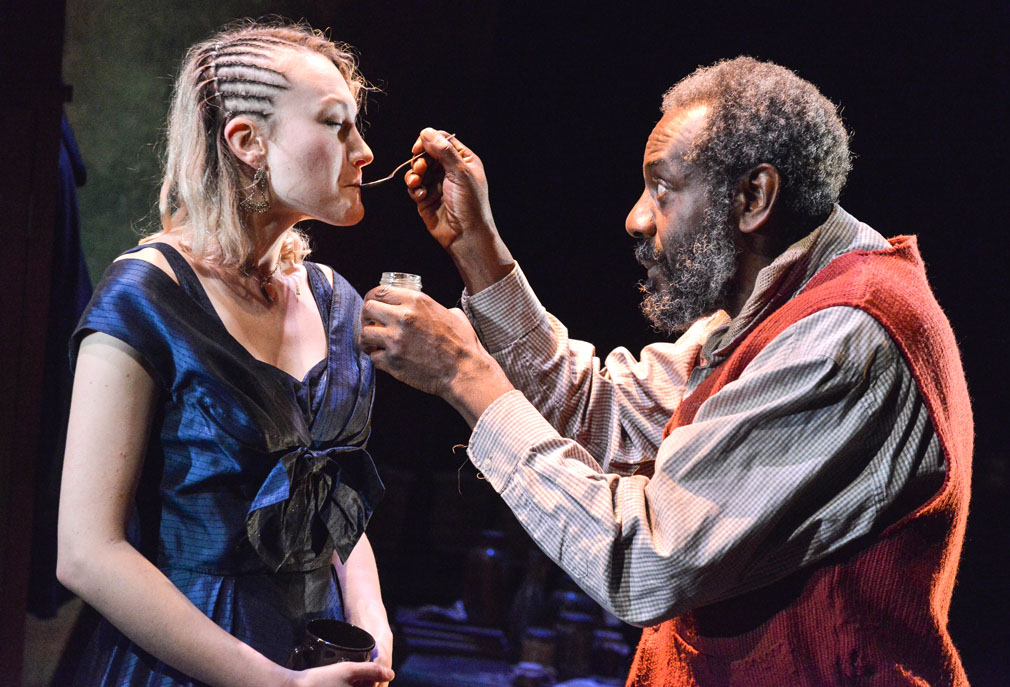The idea of two people, linked by fate, who have something to gain from one another is not a new one, but there is always something new to find if it is portrayed clearly and honestly. The Honey Man tells the story of Misty, a teenager from a very well-off family dealing with her parent’s divorce, exams and a breakdown in her friendships who finds solace in an elderly West Indian gentleman who tends bees. They strike up an unlikely friendship and it is revealed they are unusually linked.
The set, by Timothy Bird, with its slanted old wardrobe which acts as both the manor house and the cottage, has a real quaint charm to it. Around this, miniature models of the Manor house and the bee hives help to set the scene. It is simplistic in design, yet creates the busy and unorganised space for the action to take place in. The use of projection is particularly effective, both to set the scene and to highlight the message of the piece. The lighting design is subtle, with few changes needed, and lends itself to the set nicely.
Beatrice Allen finds both gusto and vulnerability in her performance. She plays the age convincing and her mannerisms are good, although perhaps seeming a little too forced at times. She finds the egocentric nature of the character and we see her change as her journey progresses – a good professional debut.
Tyrone Huggins is a joy to watch, his command of stage and audience is of the highest quality. He has a bubbling energy, rhythm and openness to his performance that makes him incredibly watchable: his “bee dance” is particularly amusing. He is also the writer of the play and you can see he has a personal connection with the work as he gets underneath the text to make his message clear.
This play shows that people of different generations, races and classes can not only get along but can form seemingly natural and deep connections. Social and natural order is a theme of the play which leaves us to consider how we live our lives. A thoughtful piece of work, well suited to the studio space of The Door. Credit must be given to director Emma Bernard who ensures that the moments between the pair seem natural and that everything is clearly spelt out.
Learning “isn’t the same as knowing” says the Honey Man wisely, and this play packs a moral punch: or should that be “sting”. Charming in places, a reflective piece – sweet, just like honey. ★★★★☆ Sam Chipman 19/02/15


